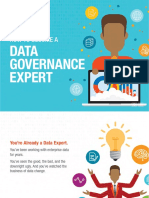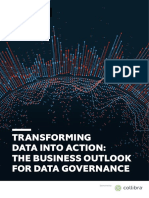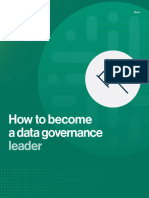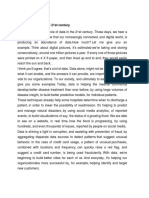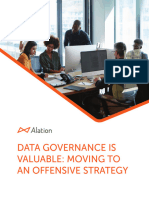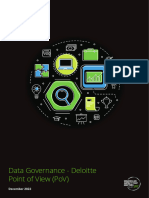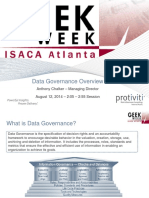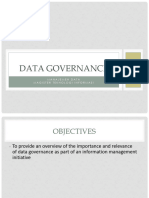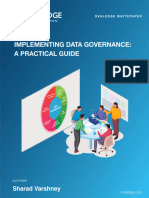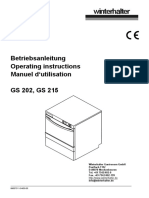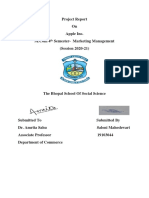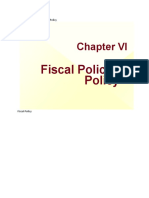0% found this document useful (0 votes)
16 views7 pagesTechnically Speaking, What Is Data Governance
Data governance has evolved beyond regulatory compliance to encompass a comprehensive strategy for leveraging data as a valuable enterprise asset. It emphasizes the importance of understanding data lineage, quality, and ownership across the organization to drive business insights and competitive advantage. Successful data governance requires a collaborative, company-wide initiative that fosters transparency, accountability, and continuous improvement in data management practices.
Uploaded by
Alvaro LópezCopyright
© © All Rights Reserved
We take content rights seriously. If you suspect this is your content, claim it here.
Available Formats
Download as DOCX, PDF, TXT or read online on Scribd
0% found this document useful (0 votes)
16 views7 pagesTechnically Speaking, What Is Data Governance
Data governance has evolved beyond regulatory compliance to encompass a comprehensive strategy for leveraging data as a valuable enterprise asset. It emphasizes the importance of understanding data lineage, quality, and ownership across the organization to drive business insights and competitive advantage. Successful data governance requires a collaborative, company-wide initiative that fosters transparency, accountability, and continuous improvement in data management practices.
Uploaded by
Alvaro LópezCopyright
© © All Rights Reserved
We take content rights seriously. If you suspect this is your content, claim it here.
Available Formats
Download as DOCX, PDF, TXT or read online on Scribd
/ 7

